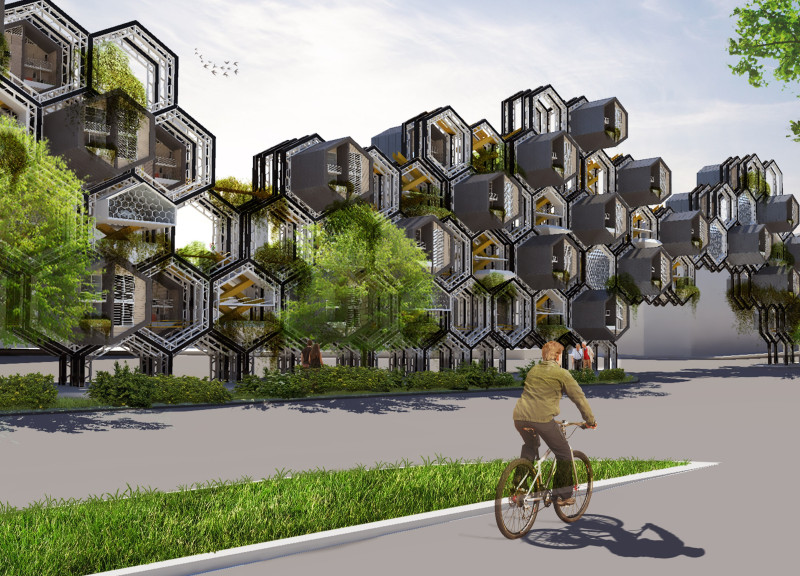5 key facts about this project
The "Incremental Living" architectural project is an innovative housing solution designed for dense urban environments, specifically addressing the housing challenges in Paris. This project exemplifies a modular approach to architecture, allowing residents to adapt their living spaces according to individual needs. By prioritizing affordability and sustainability, it responds effectively to the demands of urbanization while integrating seamlessly into the existing city fabric.
The design features a series of prefabricated modules that can be constructed incrementally. This approach aims to alleviate the financial burden on residents by allowing them to occupy smaller units initially and expand as necessary. The project's layout is characterized by flexible spaces that promote both private living and community interaction, featuring a combination of residential units, communal areas, and flexible public spaces. The hexagonal grid layout optimizes land use while providing a functional arrangement for various activities within the structure.
Innovative Design Approaches
A standout feature of this project is its emphasis on adaptability. The incremental housing model allows units to be added or modified over time, shifting the traditional notion of fixed architecture to a more dynamic form. This adaptability is not just structural; it also extends to the integration of green technologies, such as photovoltaic cells and rainwater collection systems, enhancing energy efficiency and promoting environmental stewardship.
The organization of spaces within the development incorporates both private and communal elements. Public areas such as gardens, co-working spaces, and meeting rooms encourage social engagement among residents, fostering a sense of community. The design intentionally incorporates cross-ventilation strategies, ensuring natural airflow and improved indoor air quality while minimizing reliance on artificial heating and cooling systems.
Architectural Details and Functionality
The materiality of the project plays a crucial role in its design. The use of steel frameworks ensures structural integrity while allowing for expansive openings that enhance daylight penetration. Concrete panels are utilized for durability and thermal insulation, with careful consideration given to sustainability in material selection.
The construction method emphasizes prefabrication, allowing for efficient assembly and minimizing disruption to the urban environment during the building process. This technique not only expedites development timelines but also reduces construction waste and environmental impact.
In summary, "Incremental Living" redefines urban housing through its modular design, innovative use of materials, and focus on adaptability. Its approach ensures that it meets the unique demands of modern urban living while simultaneously enhancing community engagement. For a deeper understanding of this project, including architectural plans, sections, and detailed designs, readers are encouraged to explore the project presentation further. The architectural ideas embedded in this project provide valuable insights into contemporary approaches to housing within dense urban contexts.





















































